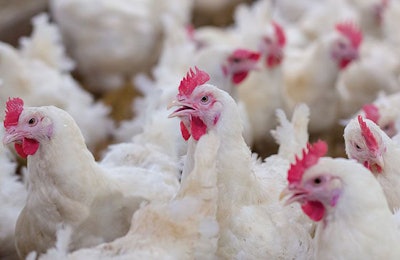
This simple compound is essential for the diet but may not be considered enough
Choline is “the most overlooked nutrient in monogastric nutrition,” according to Ryan Dilger, PhD., of the department of animal sciences at the University of Illinois-Urbana Champaign. He spoke February 23 as part of the Balchem Real Science Lecture Series.
Available in water-soluble and lipid-soluble forms, choline is important for all life stages of birds and mammals for several functions, including neurotransmission, membrane synthesis and lipid transport.
“These three are going to be the top priorities metabolically for the use of choline in the body,” Dilger said. “In general, they’re all relating to overall cellular maintenance and growth across the life stages.”
Choline also has the ability to donate a methyl group to become betaine, which can be used in a variety of roles.
“Owing to the fact that we have both betaine and folate serving as methyl donators here, we know when we have redundancy in the metabolic pathway how critically important that is going to be,” he said.
Water-soluble forms of choline are absorbed faster and elicit a higher concentration or incorporation rate of choline-containing compounds within the body compared with lipid-soluble forms.
Importance of choline in the diet
Dilger said choline deficiency in pigs and chickens leads to clear reductions in growth and reproductive performance, most likely related to accumulation of lipid within the liver.
Choline is important for reproductive function because of the importance of neurodevelopment early on. Dilger said choline deficiency is best defined as perosis in chickens, which causes the inability of the bird to properly form the cartilage within the joint, leading to leg problems – especially in broilers – with slipped tendons.
“Perhaps more overtly from a clinical sign perspective, we know tissue development abnormalities are going to occur with choline deficiency, and mainly being with bone and cartilage formation,” he said.
Dilger added that choline deficiency can manifest quickly, especially in chickens.
“Between lipid accumulation of the liver and perosis in the broiler chicken, these would be the most overt signs that we can point to,” he said.
Poultry have relatively high dietary requirement – higher than pigs. According to the 1994 Nutrient Requirements of Poultry, required choline for broilers is 750‐1,300 mg/kg diet; for laying hens, 1,100‐1,310 mg/kg diet; and for turkeys, 800‐1,600 mg/kg diet.
What are good choline sources?
Dilger said animals generally start out getting choline from water-soluble forms, such as mammals consuming water-soluble forms in milk or avian species through the egg yolk, and then they transition later in life to lipid-soluble forms.
“All of those species, and including humans, are going to transition on to foods that have more of it in the lipid-soluble form,” he said. “In our agricultural species, especially referring to oilseed meals.”
The main source of choline in feedstuffs is corn-soy-based diets. However, the bioavailability of choline will differ depending on the diet.
“Both the ingredient type and the form of choline that’s present are going to be important,” he said, so “it’s important when formulating this to make sure we are meeting the choline requirements,” adding that it is also important to include some form of choline supplement.
Choline requirements for pigs
Pigs have a lower choline requirement compared with chickens, and they can obtain sufficient amounts through milk and practical diets, Dilger said.
According to the 2012 Nutrient Requirements of Swine, choline requirements for starter/grower/finisher pigs are 400‐600 mg/kg diet; and for gestation/lactation are 600‐1,250 mg/kg diet.
Dilger said there is some evidence that higher choline intake may benefit reproductive performance of sows, with increased conception rate and increased total born alive.

















